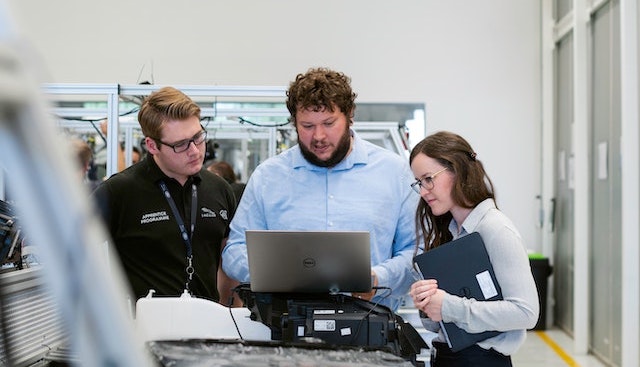[et_pb_section fb_built="1" _builder_version="4.16" global_colors_info="{}" theme_builder_area="post_content"][et_pb_row _builder_version="4.16" background_size="initial" background_position="top_left" background_repeat="repeat" global_colors_info="{}" theme_builder_area="post_content"][et_pb_column type="4_4" _builder_version="4.16" custom_padding="|||" global_colors_info="{}" custom_padding__hover="|||" theme_builder_area="post_content"][et_pb_text _builder_version="4.20.4" background_size="initial" background_position="top_left" background_repeat="repeat" hover_enabled="0" global_colors_info="{}" theme_builder_area="post_content" sticky_enabled="0"]
Research is mission-critical to solving navigation challenges in the UX and product design world. In fact, user research helps UX designers to better understand the users beyond their own internal assumptions.
Therefore, enabling designers to put themselves in users’ shoes to deliver better user experiences. One such research approach that facilitates optimal product and UX design is evaluative research.
What is evaluative research?
Evaluative research also referred to as evaluation research, is a specialised methodology that UX designers employ to evaluate a product and collect data to improve it.
It attempts to assess how well something is working. Whether a concept, existing product or service, or even some enhancements one is trying out.
In practice, usability testing is a central part of evaluative research; however, it is not the only part.
Evaluative research is a core part of the product development process typically introduced in the early phases of the design process. It is used to iteratively test existing or new solutions until the product becomes ‘final’. The fundamental premise of this research vertical is ensuring value is present within a product so that effort and resources are not wasted.
However, evaluative research does not stop when a new product is fully launched. Rather, solutions need to be continually monitored after their release and enhanced based on customer feedback to ensure they continue to add value (or even exceed) and meet the changing user needs.
Why is evaluative research important?
Evaluative research enables designers to test prospective products and collect valuable feedback to refine and improve the user experience. Discoveries from evaluative research are vital to assess what works and what doesn't, as well as identifying possible areas of improvement.
That being said, evaluative research should always be a crucial part of the product development process. And by enabling users to "evaluate" a product early and often, you can know whether you're actually building the right solution for the audience.
Additionally, the insights garnered from it can demonstrate the effectiveness and impact of a project. This can consequently help stakeholders to get buy-in for future projects whilst accomplishing product goals efficiently.
Generally, evaluative research benefits can be summarised as:
- It can help in determining if a product is appropriate to replicate in other locations with similar needs.
- It can be useful when demonstrating the impact on the product funders.
- It can prove helpful when suggesting improvements to an existing problem for a better product
- It can support any continued product or program development efforts.
Evaluative research methods
Qualitative usability testing
Qualitative user testing is a methodology that allows product designers to intuitively understand the target audience's pain points, mental models and opinions. This method typically uses the ‘think out loud’ technique to engage participants as they interact with a prototype or product.
[caption id="attachment_7241" align="alignnone" width="640"]

Photo by ThisIsEngineering[/caption]
Preference testing
Preference testing focuses on deploying subjective but useful tests to measure user opinions about designs. Also called desirability testing, this approach principally focuses on comparing the aesthetic or emotional appeal of a product or concept. This is done to better understand how people perceive and respond to its different product variants.
Surveys
Here, different sets of questions are shared with prospective users to evaluate their preferences, and attitudes towards a product. Surveys involve closed or open type questions being given to a sample audience that represents a much larger population.
First click testing
First click testing is deployed to assess the usability of a product by determining whether users are able to efficiently complete a given task. In practice, this approach principally examines what participants will click on first on an interface to complete their intended task.
This is done with the aim of verifying the most effortless path the user sees to execute a task. As a result, the method is helpful in providing information about user expectations for common interface elements like menus, buttons, and form elements.
Tree testing
The tree testing research methodology enables product designers to evaluate the hierarchy and findability of topics on a platform. Essentially, a text-only version of the website’s hierarchy is laid out in front of participants.
Consequently, the participants are asked to highlight a category within that structure where they expect to find a particular item or piece of content. Generally, this approach is helpful when structuring an information architecture as UX designers can watch users swing from branch to branch.
A/B testing
Also sometimes called split testing or bucket testing, A/B testing is used to compare two versions of a product, webpage or app against each other to determine which performs best.
Task analysis
Task analysis is an effective method for finding out what users who you hope will employ your product are trying to achieve. Also, how they go about achieving complex tasks, and how effective they are in achieving their objectives.
[caption id="attachment_7237" align="alignnone" width="640"]

Photo by RF._.studio[/caption]
Card Sorting
A relatively simple technique, card sorting provides actionable insight into how users mentally structure data. In practice, users are given randomly shuffled cards and tasked with organising(sorting) them in whatever fashion they prefer.
Once the labelled cards are sorted, the users are then asked to explain why they arranged the cards in a specific manner. The results are then documented and analysed by the researchers.
When to use evaluative research?
Evaluative research should be performed during the entire development cycle of a product. Preferably, commencing from the early concept of design until the final stages of the product design.
Evaluative research examples
Evaluative research exercises typically revolve around addressing a series of questions. For example:
- What are the pain points in the design?
- Where are people exactly clicking, and at what frequency? Are they getting to the right place?
- What are the fastest and easiest ways to redesign an existing interface?
- What ways can conversion be improved?
- Which of the two designs is better at helping users achieve their goals?
On the usability end, evaluative research can pose questions to users like:
- How was your experience completing the task?
- How would you work around performing the task?
- How did you find it navigating to the page?
- Based on your previous task, how would you prefer to perform this action instead?
Additionally, if a product has already been deployed, evaluative research can pose questions like:
- How satisfied are you with the existing product?
- How often do you utilise the product/feature?
- Does the product/ help you achieve your goals?
- How easy is it to use the product/feature?
Generative vs evaluative research
Generative research methods focus on exploration, discovery, and experimentation with different ideas. Generative research methods are thus driven by open-ended questions that allow users to share their life, goals, mental models, and experiences.
Evaluative research methods fundamentally focus on evaluating how good (or bad) the generated ideas are. This approach is principally driven by closed-ended questions to allow researchers to understand precisely what did or didn’t work to refine the ideas.
Is generative or evaluative research better?
Generative and evaluative research i quite distinct in character. The objective of generative research is to define the problem one would like to create and design a solution. On the other hand, evaluative research helps to analyse and understand an existing design.
Furthermore, generative research is typically done as a one-off and is in-depth. However, evaluative research is recommended as a regular exercise throughout the design, development, and product delivery process.
How to choose the right method?
Generally speaking, there is no “best” approach as both research methods have disparate goals and should be performed at different times in the development and design cycle.
Before choosing the right evaluative research approach, it’s imperative to know your research goals and objectives. This can help you choose an approach that takes into account the current stage of your product development cycle.
Talk to our user experience consulting team on how you can explore and choose the right research method and process better.
[/et_pb_text][/et_pb_column][/et_pb_row][/et_pb_section][et_pb_section fb_built="1" _builder_version="4.20.0" _module_preset="default" global_colors_info="{}" theme_builder_area="post_content"][et_pb_row column_structure="3_4,1_4" use_custom_gutter="on" gutter_width="4" make_equal="on" disabled_on="on|on|off" admin_label="Row" _builder_version="4.19.5" _module_preset="default" background_color="#f0f0f0" width="100%" custom_padding="|25px|0px|25px|false|false" custom_css_main_element="display: flex;" global_colors_info="{}" theme_builder_area="post_content"][et_pb_column type="3_4" _builder_version="4.19.4" _module_preset="default" global_colors_info="{}" theme_builder_area="post_content"][et_pb_text content_tablet="
Respondent Recruitment Services For Representative User Insights
" content_phone="" content_last_edited="on|phone" _builder_version="4.20.0" _module_preset="default" header_font_size="42px" width="100%" custom_margin_tablet="" custom_margin_phone="" custom_margin_last_edited="on|phone" custom_padding="||0px|5%|false|false" header_font_size_tablet="42px" header_font_size_phone="42px" header_font_size_last_edited="on|desktop" header_2_text_color_tablet="" header_2_text_color_phone="" header_2_text_color_last_edited="on|desktop" global_colors_info="{}" theme_builder_area="post_content"]
End To End User Research Service In Asia
[/et_pb_text][/et_pb_column][et_pb_column type="1_4" _builder_version="4.19.4" _module_preset="default" global_colors_info="{}" theme_builder_area="post_content"][et_pb_image src="https://cdn.netizenexperience.com/wp-content/uploads/2023/01/NX-logo.png" title_text="NX-logo" align="center" disabled_on="on|on|off" _builder_version="4.19.5" _module_preset="default" width="100%" module_alignment="right" custom_padding="24px|4px|||false|false" custom_padding_tablet="24px|4px|||false|false" custom_padding_phone="24px|4px|||false|false" custom_padding_last_edited="on|desktop" global_colors_info="{}" theme_builder_area="post_content"][/et_pb_image][/et_pb_column][/et_pb_row][et_pb_row use_custom_gutter="on" gutter_width="4" make_equal="on" disabled_on="off|off|on" admin_label="Row" _builder_version="4.19.5" _module_preset="default" background_color="#f0f0f0" width="100%" custom_padding="|25px|0px|25px|false|false" custom_css_main_element="display: flex;" global_colors_info="{}" theme_builder_area="post_content"][et_pb_column type="4_4" _builder_version="4.19.4" _module_preset="default" global_colors_info="{}" theme_builder_area="post_content"][et_pb_image src="https://cdn.netizenexperience.com/wp-content/uploads/2023/01/NX-logo.png" title_text="NX-logo" align="center" show_bottom_space_tablet="" show_bottom_space_phone="" show_bottom_space_last_edited="on|phone" disabled_on="off|off|off" _builder_version="4.20.0" _module_preset="default" width="100%" module_alignment="left" custom_margin="|70px||70px|false|false" custom_padding="24px||||false|false" custom_padding_tablet="24px|180px||180px|false|false" custom_padding_phone="24px|60px||60px|false|false" custom_padding_last_edited="on|desktop" global_colors_info="{}" theme_builder_area="post_content"][/et_pb_image][et_pb_text content_tablet="
Respondent Recruitment Services For Representative User Insights
" content_phone="
End To End User Research Service In Asia
" content_last_edited="on|phone" _builder_version="4.20.0" _module_preset="default" header_font_size="42px" width="100%" custom_margin_tablet="" custom_margin_phone="" custom_margin_last_edited="on|phone" custom_padding="||0px||false|false" header_font_size_tablet="42px" header_font_size_phone="42px" header_font_size_last_edited="on|desktop" header_2_text_color_tablet="" header_2_text_color_phone="" header_2_text_color_last_edited="on|desktop" global_colors_info="{}" theme_builder_area="post_content"][/et_pb_text][/et_pb_column][/et_pb_row][et_pb_row _builder_version="4.19.4" _module_preset="default" background_color="#f0f0f0" custom_padding="|50px||50px|false|false" global_colors_info="{}" theme_builder_area="post_content"][et_pb_column type="4_4" _builder_version="4.19.4" _module_preset="default" global_colors_info="{}" theme_builder_area="post_content"][et_pb_text _builder_version="4.20.0" _module_preset="default" global_colors_info="{}" theme_builder_area="post_content"]
Key Highlights
- provides user research services for businesses & organizations
- offers a variety of research methords, including interviews, surveys & focus groups
- conduct research to understand users' needs, behaviours & attitudes
- recruit participants who match the client's target audience & provide incentives for their participation
- provides a dedicated project manager to oversee the entire research process
- project manager coordinates the recruitment of participants, the scheduling of research sessions & the delivery of results
- provide detailed reports that include key findings & recommendations based on the research
[/et_pb_text][/et_pb_column][/et_pb_row][et_pb_row column_structure="1_2,1_2" module_class="key-highlights" _builder_version="4.20.1" _module_preset="default" background_color="#f0f0f0" custom_padding="0px|||||" custom_css_main_element="display: flex;" border_color_all="RGBA(255,255,255,0)" border_width_right="25px" border_width_left="25px" locked="off" global_colors_info="{}" theme_builder_area="post_content"][et_pb_column type="1_2" _builder_version="4.19.4" _module_preset="default" global_colors_info="{}" theme_builder_area="post_content"][et_pb_button button_url="https://www.netizenexperience.com/user-research/" url_new_window="on" button_text="LEARN MORE" button_alignment="center" _builder_version="4.20.2" _module_preset="default" custom_button="on" button_text_size="16px" button_text_color="#000000" button_bg_color="#ffc947" button_border_width="0px" button_border_radius="0px" button_font="|600|||||||" button_icon="5||divi||400" global_colors_info="{}" theme_builder_area="post_content"][/et_pb_button][/et_pb_column][et_pb_column type="1_2" _builder_version="4.19.4" _module_preset="default" global_colors_info="{}" theme_builder_area="post_content"][et_pb_button button_url="https://www.netizenexperience.com/contact-us/" url_new_window="on" button_text="CONTACT US" button_alignment="center" _builder_version="4.19.4" _module_preset="default" custom_button="on" button_text_size="16px" button_text_color="#000000" button_bg_color="#ffc947" button_border_width="0px" button_border_radius="0px" button_font="|600|||||||" button_icon="5||divi||400" global_colors_info="{}" theme_builder_area="post_content"][/et_pb_button][/et_pb_column][/et_pb_row][/et_pb_section][et_pb_section fb_built="1" _builder_version="4.16" global_colors_info="{}" theme_builder_area="post_content"][et_pb_row _builder_version="4.16" background_size="initial" background_position="top_left" background_repeat="repeat" global_colors_info="{}" theme_builder_area="post_content"][et_pb_column type="4_4" _builder_version="4.16" custom_padding="|||" global_colors_info="{}" custom_padding__hover="|||" theme_builder_area="post_content"][et_pb_text _builder_version="4.23.1" background_size="initial" background_position="top_left" background_repeat="repeat" hover_enabled="0" global_colors_info="{}" theme_builder_area="post_content" sticky_enabled="0"]
Conclusion
Evaluative research should always be a core part of any iterative design process. It ensures that the user experience is shaped and continually refined to truly meet customer needs and expectations.
Remember that the goal of the evaluative research is to iteratively test an existing solution to an existing problem to determine if it meets users’ needs, and is easy to use and access.
As such, evaluative research should only be deployed when one understands the problems they are trying to address, when they strive to get the best implementation, or when they want to create a particular user experience.
For a comprehensive understanding of how to conduct user research effectively, explore the various User Research Services offered by Netizen eXperience's Consulting.
[/et_pb_text][/et_pb_column][/et_pb_row][/et_pb_section]





